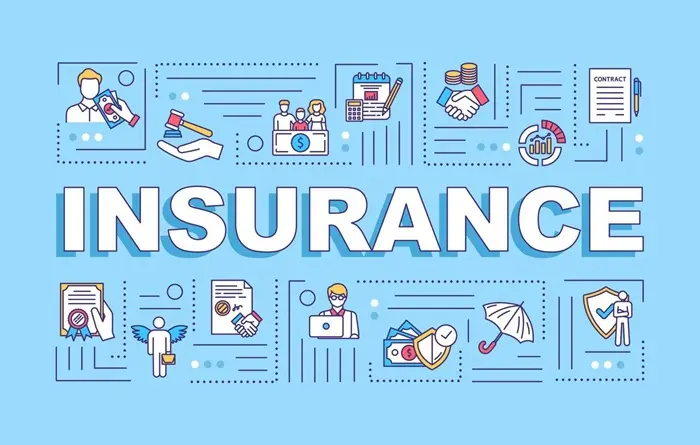Life insurance is often viewed strictly as a financial safety net, a way to ensure beneficiaries are taken care of in the event of the policyholder’s death. However, for certain types of life insurance policies—especially permanent policies like whole life and universal life—there are financial benefits that extend far beyond the death benefit. One such advantage is the ability to borrow against the policy’s cash value.
Life insurance companies offer several types of loan options tied to life insurance policies. These loans are unique because they leverage the accumulated cash value within the policy, making them a flexible source of financing for policyholders. Understanding the different types of loans available through life insurance policies is crucial for financial planning, especially when traditional credit access may be limited or expensive.
This article provides a comprehensive exploration of the types of loans life insurance companies offer. From policy loans and premium financing to collateral assignments and third-party loans, we delve into how these loans work, who qualifies for them, and the advantages and risks involved. Whether you’re looking to tap into your policy’s cash value or explore more advanced financing strategies, this guide will give you the insights you need.
We’ll also consider how broader trends in the insurance market and insurance trading influence these loan offerings. With a better understanding of these options, you can make smarter financial decisions and maximize the utility of your life insurance policy.
Understanding Cash Value in Life Insurance
Before diving into loan types, it’s important to understand what cash value is. Permanent life insurance policies like whole life or universal life accumulate a portion of each premium payment into a savings-like account known as the cash value. This component grows over time, often at a guaranteed or interest-based rate, and can be accessed during the policyholder’s lifetime.
The cash value serves as collateral for any loan taken out from the policy. Because it is technically your money, loans against it do not require credit checks or loan applications. This makes policy loans especially appealing for individuals seeking liquidity without undergoing traditional borrowing hurdles.
1. Policy Loans
Definition: A policy loan is a loan issued by the insurance company to the policyholder using the cash value of the life insurance policy as collateral.
How It Works: Policy loans are available only on permanent life insurance policies with accumulated cash value. The policyholder can borrow up to a certain percentage (typically 90%) of the total cash value. The loan is not taxed, as long as the policy remains active and does not lapse.
Interest Rates: These loans accrue interest, which may be fixed or variable depending on the insurer’s terms. If unpaid, the interest compounds and is added to the loan balance.
Repayment: Repayment is flexible. You can choose to repay it on your own terms. However, if you don’t repay it, the outstanding loan amount plus interest is deducted from the death benefit when the insured passes away.
2. Automatic Premium Loans (APL)
Definition: An automatic premium loan is a provision that allows the insurer to automatically borrow from the policy’s cash value to pay a missed premium.
Purpose: This is a protective feature that helps prevent policy lapse due to non-payment of premiums.
How It Works: If a premium is not paid by the end of the grace period, the insurer will automatically use the cash value to pay the premium, keeping the policy in force. Interest accrues on the loan until it is repaid or deducted from the death benefit.
3. Premium Financing
Definition: Premium financing is a strategy where a third-party lender provides funds to pay for life insurance premiums, usually for high-net-worth individuals.
Structure: In this arrangement, the borrower (policyholder) enters into a formal agreement with a lender, often a bank, who pays the premiums. The policy’s cash value or death benefit is used as collateral.
Use Case: This is commonly used in estate planning or business succession planning where large insurance policies are involved.
Risks: If the investment performance of the policy’s cash value underperforms, the borrower may need to post additional collateral or repay the loan out-of-pocket. It’s also complex and may involve high legal and interest costs.
4. Collateral Assignment Loans
Definition: A collateral assignment loan is when a policyholder uses their life insurance policy as collateral to obtain a loan from a third-party lender.
How It Works: The lender is given a collateral assignment of the policy, meaning they are entitled to some or all of the death benefit if the loan is not repaid by the time the policyholder dies.
Advantage: This setup allows borrowers to access financing while preserving their policy. Once the loan is repaid, the assignment ends.
Common Use: Entrepreneurs and small business owners often use this to secure working capital or investment financing.
5. Policy Surrender and Withdrawals (Loan Alternatives)
Definition: These are not loans per se, but they are methods to access the cash value in your policy.
Surrender: Surrendering your policy means you cancel it in exchange for its current cash value. However, surrender charges may apply, and you’ll lose your death benefit.
Withdrawal: You can withdraw a portion of your cash value. While this doesn’t require repayment, it reduces your policy’s value and could lead to tax consequences if the amount exceeds premiums paid.
6. Participating Policy Loans
Definition: Offered under participating whole life insurance policies, these loans may have a unique dividend component.
How It Works: In some cases, the insurer may credit dividends to the loan balance, effectively reducing the cost of the loan. Not all insurers offer this structure.
Benefit: This can be a cost-efficient way to borrow funds, especially in mutual insurance companies that regularly pay dividends to policyholders.
7. Third-Party Structured Loans
Definition: These are loans structured by financial institutions or third-party providers based on the value of your life insurance, often as part of broader wealth management strategies.
Complexity: These loans require professional advisory input and are usually tailored to high-net-worth clients. They may involve tax shelters, trusts, or offshore accounts, depending on the jurisdiction and strategy.
Risk Management: Regulatory compliance and policy performance are crucial to the success of structured loans. These should only be pursued with deep financial planning insight.
Impact of Interest Rates and Insurance Price
Interest rates directly influence the cost of borrowing against your life insurance policy. When rates are high, the cost of policy loans increases, reducing their appeal. Conversely, during low-interest periods, policy loans become an attractive source of capital due to their relative affordability.
Additionally, the insurance price for policies—especially those with high cash values—can influence how aggressively policyholders use loans. A more expensive policy may accumulate value more slowly, impacting loan accessibility and affordability.
Conclusion
Life insurance loans are a powerful yet often overlooked financial tool. Whether you need emergency funds, want to cover premiums, or finance a large estate strategy, borrowing against a life insurance policy can provide flexible and efficient capital access. However, these loans are not without risks. They reduce the policy’s death benefit, accrue interest, and if mismanaged, can even cause a policy to lapse.
Understanding each loan type and how it aligns with your financial objectives is essential. Consult with your financial advisor or insurance professional before borrowing. With the right planning, life insurance loans can support your long-term wealth-building strategies while preserving critical protection for your beneficiaries.
Related topics:






























